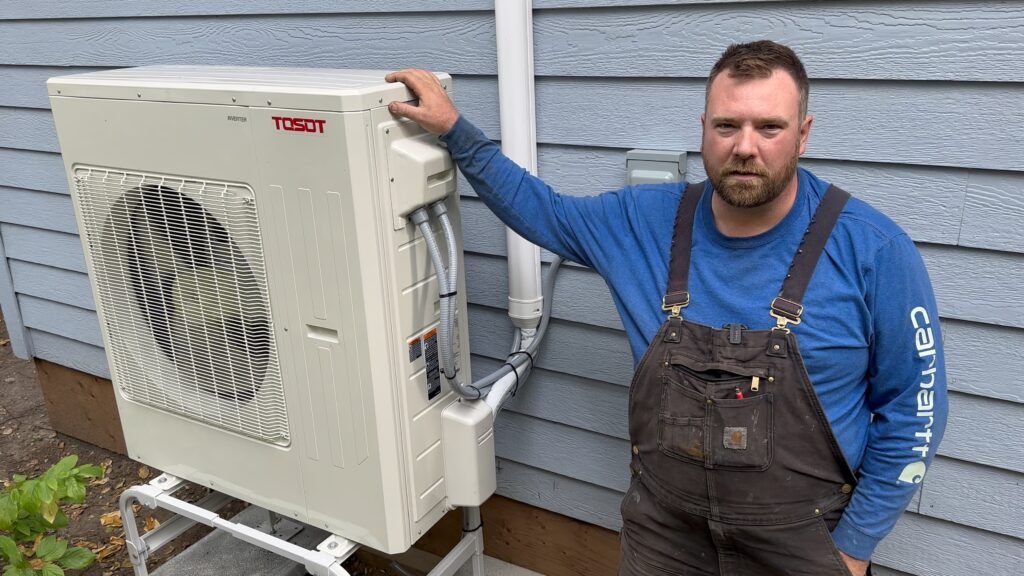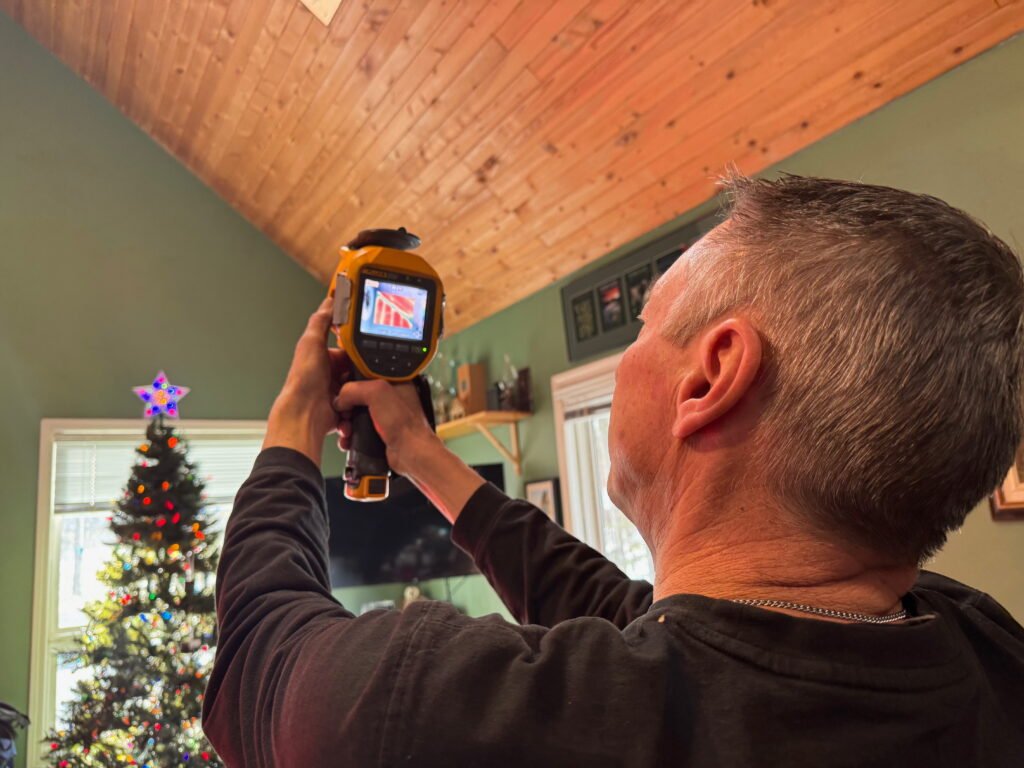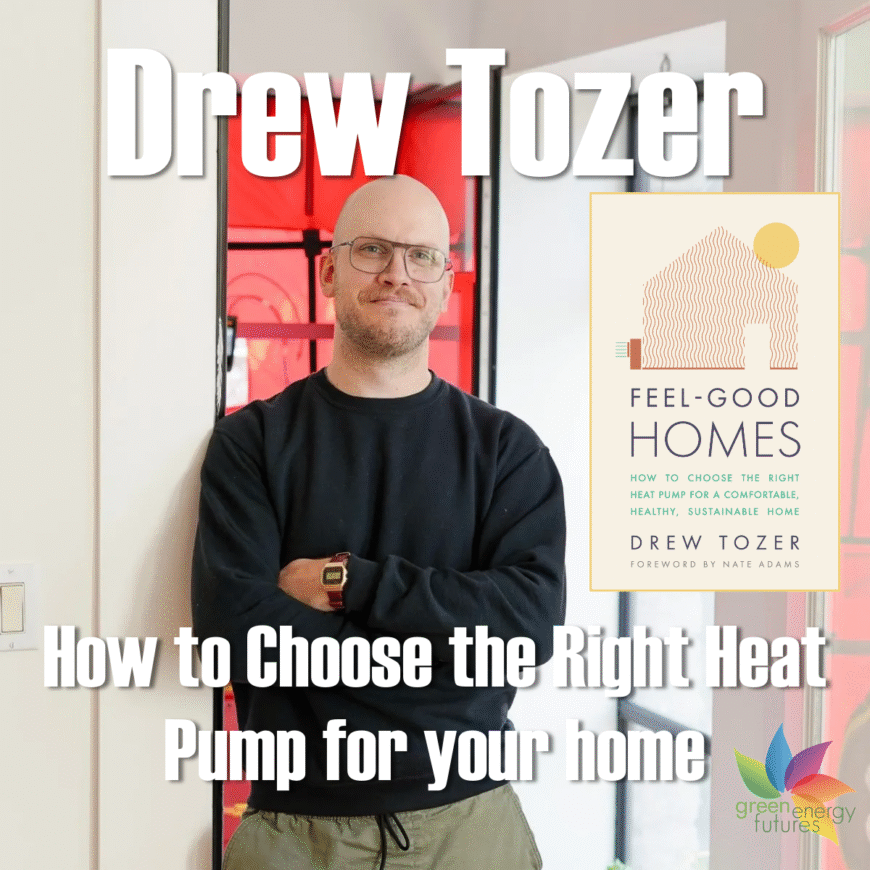Table of Contents
By David Dodge, GreenEnergyFutures.ca

You’ve heard about heat pumps, they sound pretty cool, right? And who wouldn’t want one device that can heat and cool your home efficiently?
But as CKUA listeners have told me and as I have discovered, it’s not easy getting good advice when it comes to heat pumps.
Drew Tozer of Foundry Heat Pumps in Toronto knows this all too well. He spent years doing energy audits of homes, and even when he specified a heat pump as a solution, homeowners had trouble finding one who would do it.
“You’d give that direction to a homeowner, and they’ll go to an HVAC contractor, and they’ll give the opposite advice. And so, this was my way of owning that entire process so that I can have those conversations with homeowners and then help them actually do the work.”
A guide to choosing the right heat pump for your home
So, Tozer wrote the book “Feel Good Homes – How to Choose the Right Heat Pump for a Comfortable, Healthy, Sustainable Home.”
It’s a concise, easy-to-read, comprehensive guide to not only installing a heat pump but improving air quality and managing humidity while you are at it.

This is a desperately needed guide for consumers and HVAC companies alike. And the best part is it’s free from foundryheatpumps.ca
Drew also now works directly with an HVAC company, Foundry Heat Pumps, in the Greater Toronto area. This, frankly, is the missing link in the heat pump revolution. Tozer brings expertise, good advice, and confidence to consumers who are plagued by misinformation on the Web.
“I came into the HVAC industry for climate reasons. I think every HVAC company is a climate company. Whether they want to be called that or not,” says Tozer. “And my goal has always been to help heat pumps reach the mass market.”
Heat pumps are the single most important thing homeowners can do to reduce emissions, and when combined with solar, they offer energy independence as well.
“Furnaces and resistance electric heaters are capped at 100% efficiency,” says Tozer. “Whereas heat pumps, whether that’s air source heat pumps or ground source heat pumps, end up being 300% or 400 % efficient.”
This means for every unit of energy a heat pump uses, it gives you three to four times more heat.
And getting on the electrification pathway in your home could mean cutting one utility (gas) and the associated bill forever.

Doing it right
Tozer heat pumps are not just a better widget to heat the home; they also offer a unique opportunity to wrap other benefits into the transition, such as better air quality, fewer humidity problems, and comfort.
In the book, Tozer outlines a framework for installing a heat pump and solving some of these other problems.
He calls this framework HAVEN.
- H is heat load;
- A is air leakage;
- V is value mindset;
- E is environmental control; and
- N is necessary infrastructure.
Tozer addresses each of these in the book to help get you on the path to installing a heat pump with confidence.
Tozer says the HVAC industry has routinely skipped the first step of assessing your heat load, opting instead to use rules of thumb and routinely installing oversized furnaces. This can lead to air quality issues, inefficiency, and humidity problems too.
He says when it comes to heat pumps, some homes are simple and ready for heat pumps while others may require improvements such as air sealing, insulation or other solutions before jumping to a heat pump.
Why knowing the heat load of your home is important
Finding the heat load of your home is critical to installing the best-performing heating system, and this is rarely done.
When I set out to install a heat pump in my cabin, a 2×4-walled, R12-insulated building, it was critical to understand this. Some experts said don’t do it, or even it can’t be done. And as we mentioned, it’s very hard to get good advice in the marketplace.
So, I hired an energy auditor to calculate the heat load of my cabin. Before some minor renovations, the heat load came in at 13.6 kilowatts. A 36,000 BTU mini split heat pump could provide 10.14 kilowatts, so not enough. So we insulated the crawl space and did a rather ambitious air sealing project that utilized a dozen tubes of caulking and spray foam insulation.
After this work, the design heat load was reduced to 11.82 kilowatts, just shy of what the heat pump could provide. However, we already had a wood-burning stove, and with the addition of a 6-kilowatt back-up resistance heater, we moved forward with confidence.
Check out our story on the worst-case scenario for a heat pump to see how this all turned out.
Here’s the thing: the HVAC people don’t do those calculations, and as Tozer warns, a heat pump system that fails is not going to inspire people to embrace heat pumps.
Tozer goes one step further. My design heat load numbers came from an energy model. Tozer prefers actual data. He wants to see your heating bills to find out exactly how much energy you have used to heat your home before moving forward.

Right-sizing your heat pump
Tozer says HVAC folks have routinely installed oversized furnaces in our homes, which can lead to other issues ranging from air quality to humidity and poor performance.
He says the design temperature for your heating system is set at the point where 99% of the time the temperature is warmer than that temperature.
A right-sized system clocks in at this point.
This means there will be approximately 80 hours per year that are colder than your design temperature.
“If your furnace is three times too big in the middle of January, it’s 10 or 15 times too big in March or April,” says Tozer.

Oversized systems, whether they are furnaces or heat pumps, run in short cycles.
This means you get a hit of heat, then it shuts off along with your air circulation, and the colder far reaches of your home stay colder.

“A system that is properly sized for the house. Ideally, on that cold winter night, it’ll actually run at 100 % of the time for 60 minutes,” says Tozer.
“And that means that it’s pushing the right amount of heat through the house that entire time. You get better mixing, you get better comfort, because you get more consistent and even air temperatures and surface temperatures throughout the house.”
Learn more by picking up the book for free
If you are in the Toronto area, they will send you a free copy of the book, but if you are anywhere else, you can download a PDF copy of the book for free at foundryheatpumps.ca.
Green Energy Futures CKUA.com Podcast Feature
Related Videos

